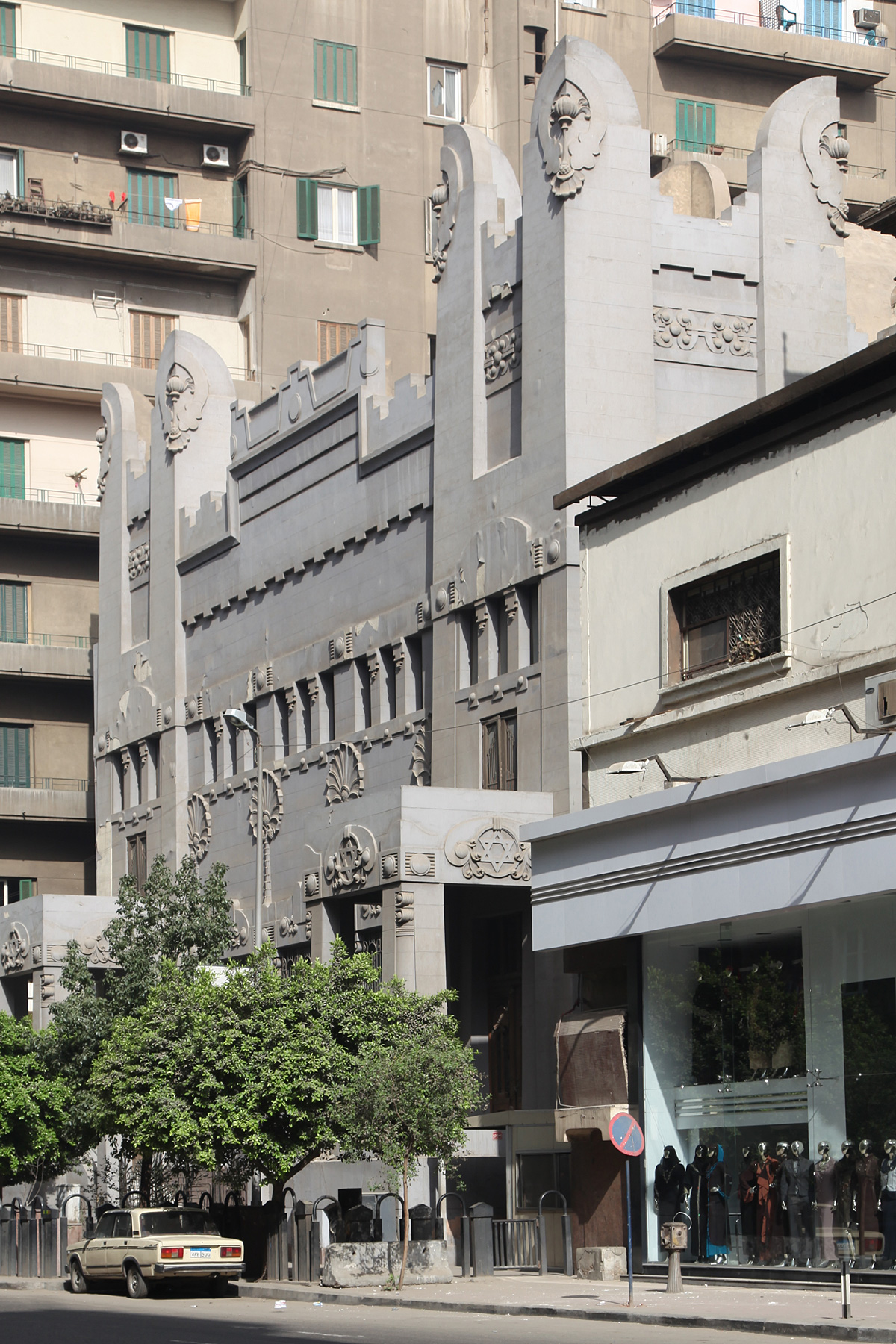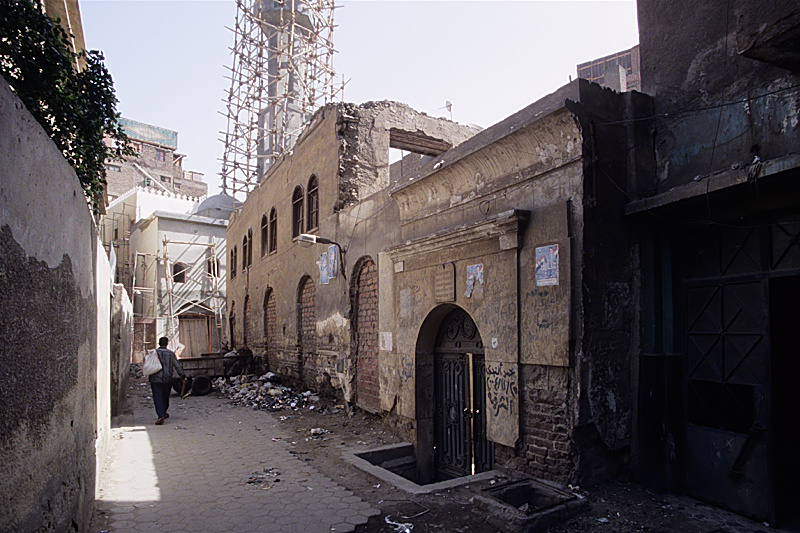|
Synagogues In Cairo
Cairo contains a number of synagogues, though only a handful of Jews remain. As of December 2022, there were 12 remaining synagogues but only 3 native Egyptian Jewish inhabitants in the city. Historical background The Egyptian Jews constitute both one of the oldest and youngest Jewish communities in the world. The historic core of the indigenous community consisted mainly of Arabic-speaking Rabbinic Judaism, Rabbanites and Karaite Judaism, Karaites. After their expulsion from Spain, more Sephardi Jews, Sephardi and Karaite Jews began to emigrate to Egypt and their numbers increased significantly with the growth of trading prospects after the opening of the Suez Canal in 1869. As a result, Jews from all over the territories of the Ottoman Empire as well as History of the Jews in Italy, Italy and History of the Jews in Greece, Greece started to settle in the main cities of Egypt, where they thrived. The Ashkenazi Jews, Ashkenazi community, mainly confined to Cairo's Darb al-Barabira ... [...More Info...] [...Related Items...] OR: [Wikipedia] [Google] [Baidu] |
Ben Ezra Synagogue
The Ben Ezra Synagogue ( he, בית כנסת בן עזרא; ar, معبد بن عزرا), sometimes referred to as the El-Geniza Synagogue () or the Synagogue of the Levantines (al-Shamiyin), is situated in the Fustat part of Old Cairo, Egypt. According to local folklore, it is located on the site where baby Moses was found. This was the synagogue whose geniza or store room was found in the 19th century to contain a treasure of forgotten, stored-away Hebrew, Aramaic and Judeo-Arabic secular and sacred manuscripts. The collection, known as the Cairo Geniza, was brought to the University of Cambridge in Cambridge, England at the instigation of Solomon Schechter. It is now divided between several academic libraries, with the majority being kept at the Cambridge University Library. History Outline Ben Ezra as an institution is ancient, and has occupied at least three buildings in its history. There have been many major and minor renovations. The current building dates to the 1890s. ... [...More Info...] [...Related Items...] OR: [Wikipedia] [Google] [Baidu] |
Sha'ar Hashamayim Synagogue (Cairo)
The Sha'ar HaShamayim Synagogue (lit. ''Gate of Heaven'') is located in Cairo, Egypt. The synagogue was also known as ''Temple Ismailia'' and the ''Adly Street Synagogue''. Its long-time leader was Chief Rabbi Chaim Nahum. In 2008, the synagogue marked its 100th anniversary.Stern, YoavCairo Synagogue marks 100 years of grandeur and decline ''Haaretz'', 04-11-2007. Retrieved on 2011-03-22. The synagogue was built in a style evoking ancient Egyptian temples, and was once the largest building on the boulevard. When the synagogue opened in 1899, there was a vibrant Jewish community in Cairo. The last time the synagogue was full was in the 1960s. Today the community numbers 6 members, most of them older women. Although it is considered a Sephardic synagogue, many Ashkenazi Jews were members of the congregation and contributed to its construction and upkeep. [...More Info...] [...Related Items...] OR: [Wikipedia] [Google] [Baidu] |
Almohades
The Almohad Caliphate (; ar, خِلَافَةُ ٱلْمُوَحِّدِينَ or or from ar, ٱلْمُوَحِّدُونَ, translit=al-Muwaḥḥidūn, lit=those who profess the unity of God) was a North African Berber Muslim empire founded in the 12th century. At its height, it controlled much of the Iberian Peninsula (Al Andalus) and North Africa (the Maghreb). The Almohad movement was founded by Ibn Tumart among the Berber Masmuda tribes, but the Almohad caliphate and its ruling dynasty were founded after his death by Abd al-Mu'min al-Gumi. Around 1120, Ibn Tumart first established a Berber state in Tinmel in the Atlas Mountains. Under Abd al-Mu'min (r. 1130–1163) they succeeded in overthrowing the ruling Almoravid dynasty governing Morocco in 1147, when he conquered Marrakesh and declared himself caliph. They then extended their power over all of the Maghreb by 1159. Al-Andalus soon followed, and all of Muslim Iberia was under Almohad rule by 1172. The turning p ... [...More Info...] [...Related Items...] OR: [Wikipedia] [Google] [Baidu] |
Córdoba, Spain
Córdoba (; ),, Arabic: قُرطبة DIN 31635, DIN: . or Cordova () in English, is a city in Andalusia, Spain, and the capital of the Province of Córdoba (Spain), province of Córdoba. It is the third most populated Municipalities in Spain, municipality in Andalusia and the 11th overall in the country. The city primarily lies on the right bank of the Guadalquivir, in the south of the Iberian Peninsula. Once a Roman settlement, it was taken over by the Visigothic Kingdom, Visigoths, followed by the Umayyad conquest of Hispania, Muslim conquests in the eighth century and later becoming the capital of the Umayyad Caliphate of Córdoba. During these Islamic Golden Age, Muslim periods, Córdoba was transformed into a world leading center of education and learning, producing figures such as Maimonides, Averroes, Ibn Hazm, and Al-Zahrawi, and by the 10th century it had grown to be the second-largest city in Europe. Following the Siege of Córdoba (1236), Christian conquest in 1236, it ... [...More Info...] [...Related Items...] OR: [Wikipedia] [Google] [Baidu] |
Exile
Exile is primarily penal expulsion from one's native country, and secondarily expatriation or prolonged absence from one's homeland under either the compulsion of circumstance or the rigors of some high purpose. Usually persons and peoples suffer exile, but sometimes social entities like institutions (e.g. the papacy or a government) are forced from their homeland. In Roman law, ''exsilium'' denoted both voluntary exile and banishment as a capital punishment alternative to death. Deportation was forced exile, and entailed the lifelong loss of citizenship and property. Relegation was a milder form of deportation, which preserved the subject's citizenship and property. The term diaspora describes group exile, both voluntary and forced. "Government in exile" describes a government of a country that has relocated and argues its legitimacy from outside that country. Voluntary exile is often depicted as a form of protest by the person who claims it, to avoid persecution and prosecu ... [...More Info...] [...Related Items...] OR: [Wikipedia] [Google] [Baidu] |
Maimonides
Musa ibn Maimon (1138–1204), commonly known as Maimonides (); la, Moses Maimonides and also referred to by the acronym Rambam ( he, רמב״ם), was a Sephardic Jewish philosopher who became one of the most prolific and influential Torah scholars of the Middle Ages. In his time, he was also a preeminent astronomer and physician, serving as the personal physician of Saladin. Born in Córdoba, Almoravid Empire (present-day Spain), on Passover eve, 1138 (or 1135), he worked as a rabbi, physician and philosopher in Morocco and Egypt. He died in Egypt on 12 December 1204, when his body was taken to the lower Galilee and buried in Tiberias. During his lifetime, most Jews greeted Maimonides' writings on Jewish law and ethics with acclaim and gratitude, even as far away as Iraq and Yemen. Yet, while Maimonides rose to become the revered head of the Jewish community in Egypt, his writings also had vociferous critics, particularly in Spain. Nonetheless, he was posthumously ackno ... [...More Info...] [...Related Items...] OR: [Wikipedia] [Google] [Baidu] |
Physician
A physician (American English), medical practitioner (Commonwealth English), medical doctor, or simply doctor, is a health professional who practices medicine, which is concerned with promoting, maintaining or restoring health through the study, diagnosis, prognosis and treatment of disease, injury, and other physical and mental impairments. Physicians may focus their practice on certain disease categories, types of patients, and methods of treatment—known as specialities—or they may assume responsibility for the provision of continuing and comprehensive medical care to individuals, families, and communities—known as general practice. Medical practice properly requires both a detailed knowledge of the academic disciplines, such as anatomy and physiology, underlying diseases and their treatment—the ''science'' of medicine—and also a decent competence in its applied practice—the art or ''craft'' of medicine. Both the role of the physician and the meaning ... [...More Info...] [...Related Items...] OR: [Wikipedia] [Google] [Baidu] |
Rabbi
A rabbi () is a spiritual leader or religious teacher in Judaism. One becomes a rabbi by being ordained by another rabbi – known as '' semikha'' – following a course of study of Jewish history and texts such as the Talmud. The basic form of the rabbi developed in the Pharisaic (167 BCE–73 CE) and Talmudic (70–640 CE) eras, when learned teachers assembled to codify Judaism's written and oral laws. The title "rabbi" was first used in the first century CE. In more recent centuries, the duties of a rabbi became increasingly influenced by the duties of the Protestant Christian minister, hence the title " pulpit rabbis", and in 19th-century Germany and the United States rabbinic activities including sermons, pastoral counseling, and representing the community to the outside, all increased in importance. Within the various Jewish denominations, there are different requirements for rabbinic ordination, and differences in opinion regarding who is recognized as a rabbi. For ex ... [...More Info...] [...Related Items...] OR: [Wikipedia] [Google] [Baidu] |
Philosopher
A philosopher is a person who practices or investigates philosophy. The term ''philosopher'' comes from the grc, φιλόσοφος, , translit=philosophos, meaning 'lover of wisdom'. The coining of the term has been attributed to the Greek thinker Pythagoras (6th century BCE).. In the Classics, classical sense, a philosopher was someone who lived according to a certain way of life, focusing upon resolving Meaning of life, existential questions about the human condition; it was not necessary that they discoursed upon Theory, theories or commented upon authors. Those who most arduously committed themselves to this lifestyle would have been considered ''philosophers''. In a modern sense, a philosopher is an intellectual who contributes to one or more branches of philosophy, such as aesthetics, ethics, epistemology, philosophy of science, logic, metaphysics, social theory, philosophy of religion, and political philosophy. A philosopher may also be someone who has worked in the hum ... [...More Info...] [...Related Items...] OR: [Wikipedia] [Google] [Baidu] |
Transliteration
Transliteration is a type of conversion of a text from one writing system, script to another that involves swapping Letter (alphabet), letters (thus ''wikt:trans-#Prefix, trans-'' + ''wikt:littera#Latin, liter-'') in predictable ways, such as Greek → , Cyrillic → , Greek → the digraph , Armenian → or Latin → . For instance, for the Greek language, Modern Greek term "", which is usually Translation, translated as "Greece, Hellenic Republic", the usual transliteration to Latin script is , and the name for Russia in Cyrillic script, "", is Scientific transliteration of Cyrillic, usually transliterated as . Transliteration is not primarily concerned with representing the Phonetics, sounds of the original but rather with representing the characters, ideally accurately and unambiguously. Thus, in the Greek above example, is transliterated though it is pronounced , is transliterated though pronounced , and is transliterated , though it is pronounced (exactly li ... [...More Info...] [...Related Items...] OR: [Wikipedia] [Google] [Baidu] |
Maimonides Synagogue
The Maimonides Synagogue ( he, , translit: ''Bet Knesset ha-Rambam''; ar, كنيس ابن ميمون), also known as the Rav Moshe Synagogue, is a historic synagogue located in Cairo, Egypt. A synagogue has existed at the site since the 10th century and was subsequently named after the famous Jewish philosopher, rabbi and physician Maimonides, after his arrival there in around 1168. It is believed that Maimonides' original tomb is contained within the building. In March 2010, the Egyptian government completed the restoration of the current building which dates from the late 19th century. Early history A synagogue has existed at the site from around two centuries before Maimonides emigrated to Egypt in around 1168, following his exile from Córdoba, Spain at the hands of the Almohads. Goitein, S.D. ''Letters of Medieval Jewish Traders''. Princeton University Press, 1973 (), p. 2081954 ''Encyclopedia Americana'', vol. 18, p. 140. The Almohads had conquered Córdoba in 1148 and t ... [...More Info...] [...Related Items...] OR: [Wikipedia] [Google] [Baidu] |






